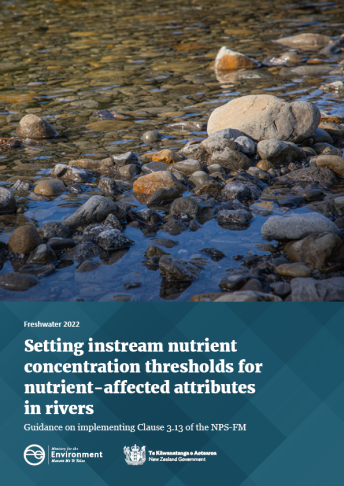This technical guidance, prepared by NIWA and Cawthron on behalf of the Ministry for the Environment, will help councils to set instream concentration thresholds (ICTs) for DIN and DRP – these are needed to achieve targets for all nutrient-affected attributes in rivers.
This technical guidance, prepared by NIWA and Cawthron on behalf of the Ministry for the Environment, will help councils to set instream concentration thresholds (ICTs) for DIN and DRP – these are needed to achieve targets for all nutrient-affected attributes in rivers.
This guidance covers setting ICTs for attributes related to periphyton, macroinvertebrates, fish, dissolved oxygen and ecosystem metabolism, and is divided into two parts:
- Attributes and their relationship with nutrients — presents an overview of the relationships that instream nutrient concentrations have with the key nutrient-affected attributes
- Setting nutrient exceedance criteria — presents strategies that may be used to set ICTs for nutrient-affected attributes in rivers.
While specific technical guidance that sets ICTs for the periphyton attribute is available on the webpage (see below), it is difficult to make effective decisions about how to implement Clause 3.13 when the periphyton attribute is excluded from decision-making. So, it is included in this present guidance.
The guidance was written for people and organisations with a key role in the NPS-FM implementation, including resource scientists and resource managers. This guidance is part of a package of technical guidance for setting ICTs for implementing clause 3.13 of NPS-FM 2020 and should be read alongside:
Derivation of nutrient criteria for periphyton biomass objectives
Guidance on look-up tables for setting nutrient targets for periphyton: second edition – which contains a national level model for periphyton and guidance for its application.
